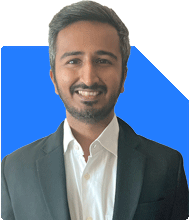Ramalingam Kalirajan |10870 Answers |Ask -Follow
Mutual Funds, Financial Planning Expert - Answered on May 28, 2024
He has an MBA in finance from the University of Madras and is a certified financial planner.
He is the director and chief financial planner at Holistic Investment, a Chennai-based firm that offers financial planning and wealth management advice.... more

Hi, I am 22 years old doing SIP of Rs. 16,000 in following funds :- 1. Quant Flexi Cap Fund:- Rs. 4000 2. Parag Parikh Flexi Cap:- Rs. 3000 3. Nippon India Large Cap Fund:- 2000 4. HDFC Balanced Advantage Fund:- 2000 5. Quant Mid Cap Fund:- 1500 6. Motilal Oswal Mid Cap Fund:- 1500 7. Bandhan Small Cap Fund:- 1000 8. Axis Small Cap Fund:- 1000 Please do a review my portfolio as well as these selected funds. Also please give your suggestions. Thank you!
Portfolio Review
Diversification Across Funds
You have diversified across various categories, including flexi cap, large cap, balanced advantage, mid cap, and small cap funds. Diversification helps in spreading risk and capturing growth from different market segments.
Fund Categories and Allocation
Flexi Cap Funds: These funds offer flexibility to invest across market capitalizations. They balance risk and reward effectively.
Large Cap Funds: Large cap funds are stable and less volatile, providing consistent returns over time.
Balanced Advantage Funds: These funds dynamically manage equity and debt, offering a balanced approach to growth and stability.
Mid Cap Funds: Mid cap funds are riskier but can deliver higher returns than large cap funds. They offer growth potential.
Small Cap Funds: Small cap funds are the most volatile but can provide significant growth over the long term.
Recommendations for Portfolio Optimization
Assessing Risk and Returns
Your portfolio is well-diversified but leans towards higher risk with significant exposure to mid and small cap funds. At your age, a higher risk tolerance is understandable, but it’s crucial to maintain a balance.
Adjusting Fund Allocation
Increase Allocation to Large Cap and Balanced Advantage Funds: These funds provide stability and consistent returns. Increasing your investment in these funds can balance the risk from mid and small cap funds.
Review Flexi Cap Funds Allocation: You have a substantial allocation to flexi cap funds. Ensure these funds are performing well and meeting your investment goals.
Monitor Mid and Small Cap Funds: Keep an eye on the performance of mid and small cap funds. Consider reducing exposure if they are too volatile for your risk tolerance.
Regular vs. Direct Funds
Investing through regular funds with the help of a Certified Financial Planner ensures you receive expert guidance. This helps in making informed decisions and optimizing your investment strategy.
Long-Term Investment Strategy
Goals and Time Horizon
Identify your financial goals and time horizon. Long-term goals like retirement or buying a house can tolerate higher risks. Short-term goals require safer investments.
Systematic Investment Plan (SIP)
Continue with your SIPs to benefit from rupee cost averaging. This reduces the impact of market volatility and helps in disciplined investing.
Emergency Fund
Ensure you have an emergency fund covering 6-12 months of expenses. This provides financial security in case of unforeseen events.
Health and Life Insurance
Consider getting adequate health and life insurance coverage. This protects your investments and provides financial security to your family.
Conclusion
Your proactive approach to investing is excellent. By adjusting your fund allocation and maintaining a balanced risk profile, you can achieve your financial goals more effectively. Regular reviews and guidance from a Certified Financial Planner will ensure your investments stay on track.
Best Regards,
K. Ramalingam, MBA, CFP,
Chief Financial Planner,
www.holisticinvestment.in
You may like to see similar questions and answers below
Vivek Lala |323 Answers |Ask -Follow
Tax, MF Expert - Answered on Jun 26, 2023
Sanjeev Govila | Answer |Ask -Follow
Financial Planner - Answered on Jul 23, 2023
Ramalingam Kalirajan |10870 Answers |Ask -Follow
Mutual Funds, Financial Planning Expert - Answered on May 25, 2024
Ramalingam Kalirajan |10870 Answers |Ask -Follow
Mutual Funds, Financial Planning Expert - Answered on Jul 09, 2024
Samraat Jadhav |2498 Answers |Ask -Follow
Stock Market Expert - Answered on Nov 11, 2024
Dr Shyam Jamalabad |106 Answers |Ask -Follow
Dentist - Answered on Dec 05, 2025
Dr Dipankar Dutta |1836 Answers |Ask -Follow
Tech Careers and Skill Development Expert - Answered on Dec 05, 2025
Ulhas Joshi |280 Answers |Ask -Follow
Mutual Fund Expert - Answered on Dec 05, 2025
Dr Dipankar Dutta |1836 Answers |Ask -Follow
Tech Careers and Skill Development Expert - Answered on Dec 04, 2025
Ravi Mittal |676 Answers |Ask -Follow
Dating, Relationships Expert - Answered on Dec 04, 2025
Anu Krishna |1745 Answers |Ask -Follow
Relationships Expert, Mind Coach - Answered on Dec 04, 2025
Anu Krishna |1745 Answers |Ask -Follow
Relationships Expert, Mind Coach - Answered on Dec 04, 2025
Mayank Chandel |2562 Answers |Ask -Follow
IIT-JEE, NEET-UG, SAT, CLAT, CA, CS Exam Expert - Answered on Dec 04, 2025
Mayank Chandel |2562 Answers |Ask -Follow
IIT-JEE, NEET-UG, SAT, CLAT, CA, CS Exam Expert - Answered on Dec 04, 2025
Mayank Chandel |2562 Answers |Ask -Follow
IIT-JEE, NEET-UG, SAT, CLAT, CA, CS Exam Expert - Answered on Dec 04, 2025



























